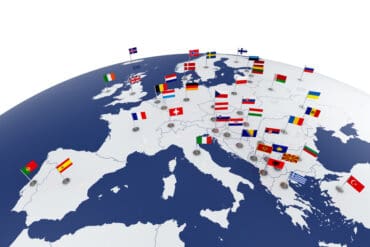
As more companies start to understand the power of customer experience, they open new positions and sometimes even new departments dedicated to it.
Until a few years ago, it was common for people not to give much thought to customer experience (CX). Many just assumed it was a synonym for customer service, and while customer service can certainly be an instrumental part of every engagement with a brand, it’s just one component of it.
Things are changing.
First of all, so many new CX-related B2B companies, solutions, and tools have emerged in the last few years to help brands manage their customer experience. These range from contact center technologies to customer analytics, digital transformation, and personalization tools. Solutions often appear in the form of software, useful to gather feedback from customers, analyze user behavior, and personalize experiences.
The pandemic, of course, has made it imperative for companies to pivot their retail and marketing strategies, as online shopping underwent the most impressive growth ever, and people expect a different type of shopping experience. Even now, in 2021, e-commerce sales are still growing. However, it would also be wrong to be focusing solely on online shopping, as consumers seem to be expecting a more complex experience that offers smooth, omnichannel service and transitions.
See also: Add Intelligence to the CX
As more companies start to understand the power of customer experience, they open new positions and sometimes even new departments dedicated to it. It is now common for larger companies to hire a Chief Customer Officer, a Head of Customer Experience, or a CX Consultant. These professionals oversee customer satisfaction metrics — such as NPS, CSAT, CES, etc. — gather data, generate insights, and lead the way the company’s brand, services, and products are experienced by consumers.
The data also shows the relevance of the customer experience industry. Research shows that customer experience is a top priority for executives in the United States and the United Kingdom; that applies to a vast majority of executives of large and profitable companies (87%).
However, only one-third of the executives surveyed in the study mentioned above said they feel prepared to address customer experience. Skills shortage was deemed one of the main reasons for this unpreparedness. Additionally, data and analytics are crucial to tackling CX, but if you don’t have the tools or resources to get the insights you need and know how to analyze them, your CX strategy won’t take you that far.
If you want to follow the money, think of the $1.125B acquisition of Clarabridge by Qualtrics, the famous experience management platform. Clarabridge’s AI software allows companies to collect and gather customer feedback. Other money moves include not only acquisitions but also IPOs, like Sprinklr’s and Medallia’s.
It’s time to switch the mindset. CX is not just some fancy accessory that you add to your company to show you’re ahead of the new trends. It’s a vital component of a company’s brand and identity, as it’s a way to deliver memorable experiences, retain customers or even build loyal customers, and display the company’s value of customer-centrism.
The CX industry is now starting to build communities. Awards International, for example, has been organizing for years the UK, European, and international editions of the Customer Experience Awards and the Digital Experience Awards. The same organization, which is UK-based, also publishes an online magazine called Customer Experience Magazine. More publications in this field have recently emerged — these include CXBuzz and CX Today.
Networks of professionals include the Customer Experience Professionals Association (CXPA) and the European Customer Experience Organization (ECXO).
In short, there is no point in ignoring the massive role that customer experience plays in today’s economy. Over the next few years, expect many new CX tools to emerge and expect to use them a lot. And definitely expect to give customer experience a lot more thought.





























